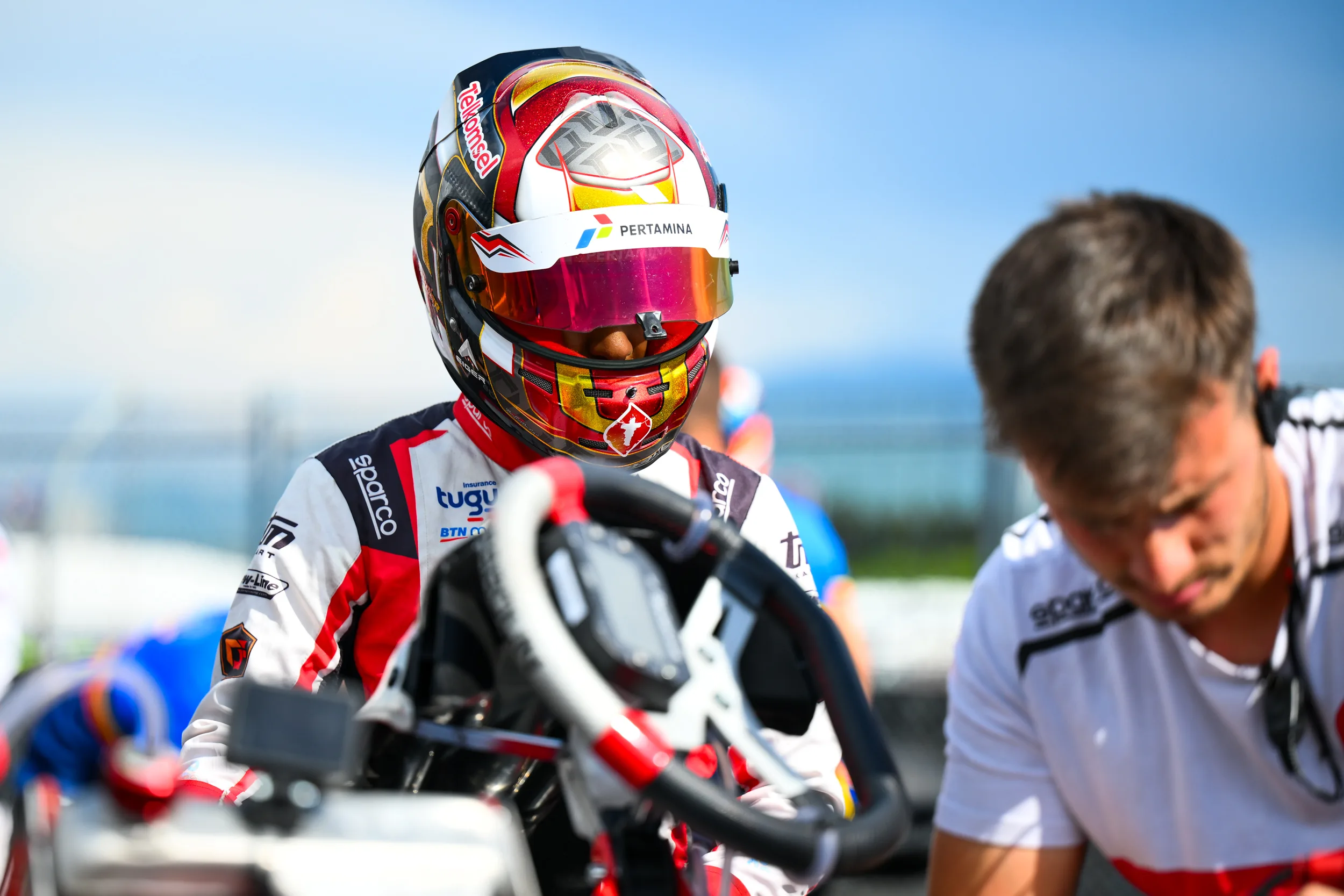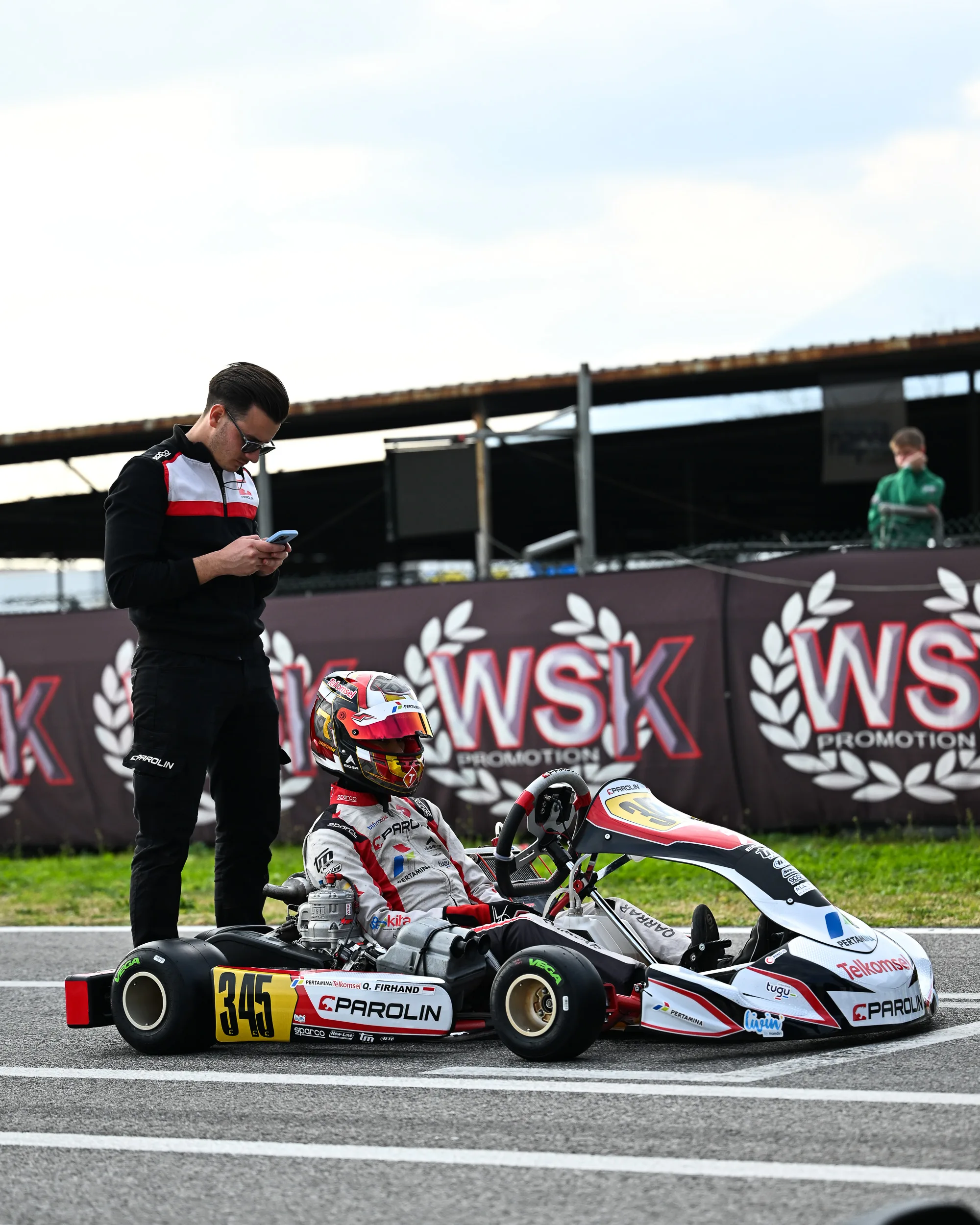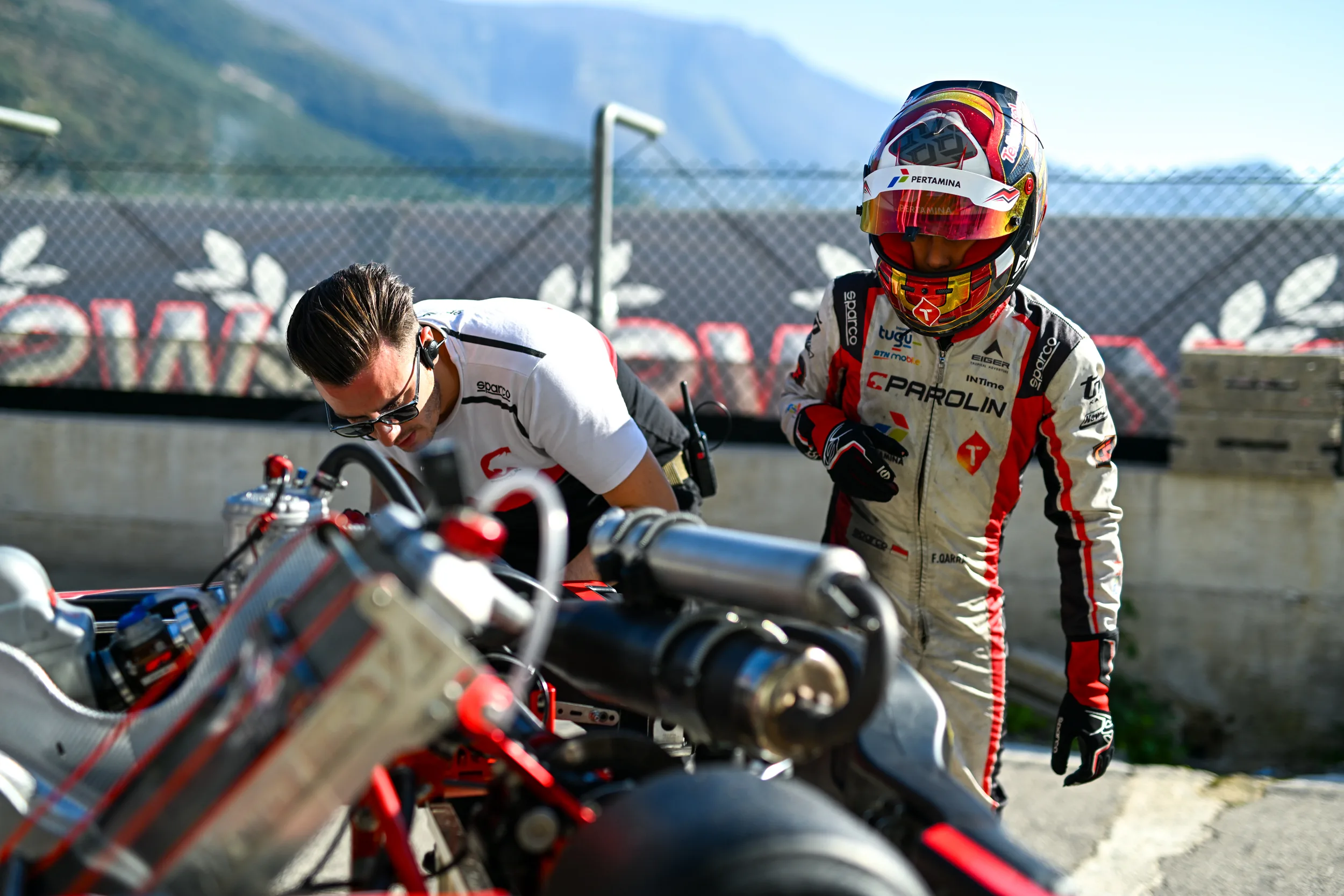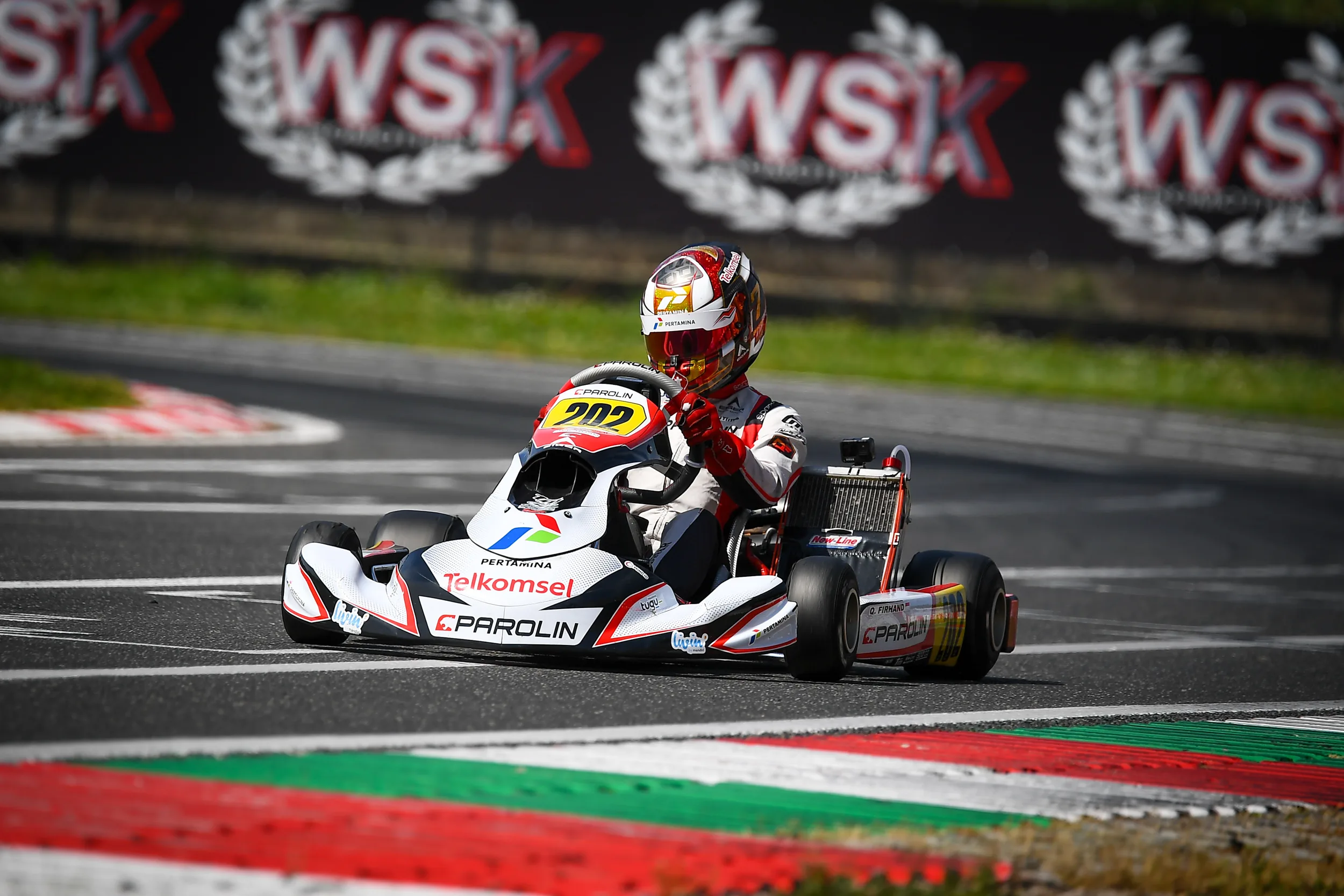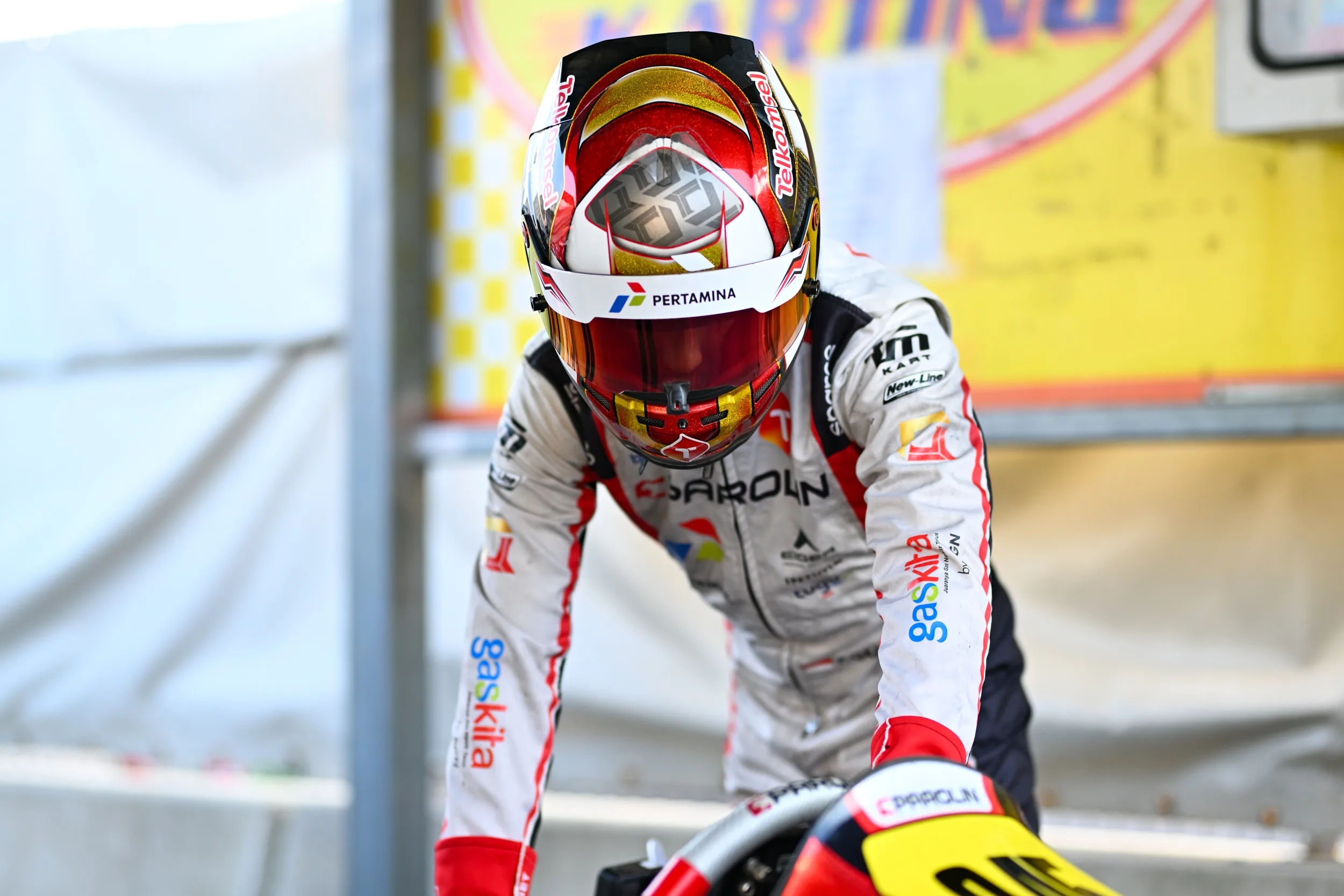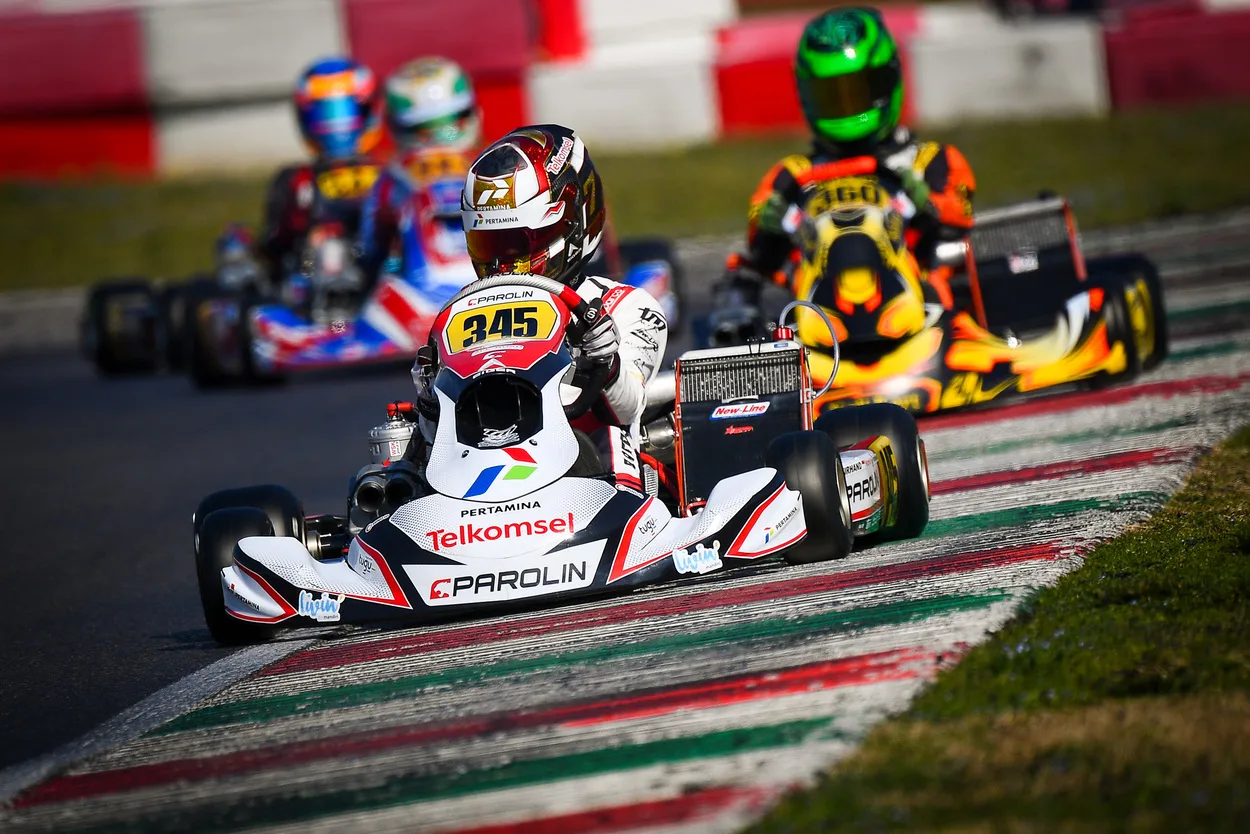At just 13 years old, Jakarta-born karting sensation Qarrar Firhand has already made a name for himself across three continents. His secret to success lies not just in his driving skills, but in his razor-sharp mind that turns pressure into fuel for his racing ambitions!
Qarrar represents a new generation of racers who understand that mental toughness is as crucial as physical ability. This young Indonesian prodigy has demonstrated extraordinary psychological resilience, competing against elite international racers with the composure of a seasoned professional.
The journey of this rising star offers valuable lessons in focus, resilience, and psychological preparation that can be applied beyond sports to everyday challenges, enhancing overall performance.
The Psychology Behind Elite Racing Performance
The psychology behind elite racing performance is a complex interplay of stress management, focus, and mental conditioning. Modern motorsport isn’t just about speed—it’s a battlefield where mental fortitude becomes the ultimate accelerator.
The High-Pressure Environment of Modern Motorsports
Modern motorsports create an intensely high-pressure environment where drivers must make life-or-death decisions at speeds exceeding 60 mph while processing multiple variables simultaneously. Athletes face split-second choices at high speeds, where razor-sharp focus separates podium finishers from the pack.
The demands on racers are multifaceted, requiring them to juggle g-forces, rival maneuvers, and changing conditions—all while maintaining millisecond precision. This high-stakes environment underscores the importance of mental toughness in achieving racing success.
Why Mental Conditioning Determines Racing Success
Research shows that elite racers process information up to 30% faster under stress than novices, demonstrating how mental conditioning becomes the ultimate performance differentiator in competitive racing. The psychological demands of racing extend beyond the track, requiring athletes to develop comprehensive mental strategies.
These strategies help manage pre-race anxiety, in-race focus, and post-race analysis. By mastering stress through proven psychological strategies, racers can gain a competitive edge that is crucial in the high-pressure world of motorsports.
As technological advancements continue to level the playing field, the psychological edge becomes increasingly valuable. This makes mental conditioning a critical component of a racer’s training regimen, enabling them to perform at their best under pressure.
Qarrar Firhand’s Journey: From Jakarta to Global Racing Phenomenon
With a steering wheel in his hands and a dream in his heart, Qarrar Firhand started his journey from Jakarta’s gritty tracks. The sound of revving engines became his childhood soundtrack, and his father, Firhand Ali, recognized his natural talent early on.
Early Development and Racing Foundations
Qarrar’s training began with intense 12-hour practice days at local circuits, where he honed his skills and developed a champion’s mindset. By treating every lap like it was championship Sunday, Qarrar built a strong foundation that would serve him well in his future racing career.
International Achievements That Showcase Mental Fortitude
At just ten years old, Qarrar faced his first international challenge at Italy’s prestigious South Garda Karting facility. Competing against world-class drivers on unfamiliar tracks tested his mental fortitude and adaptability. Qarrar’s ability to thrive in these conditions showcased his exceptional skills and paved the way for future results.
Overcoming Cultural and Competitive Challenges
Qarrar’s journey was not without its challenges. He had to navigate language barriers, cultural differences, and the pressure of representing Indonesia on the global stage. Through his determination and resilience, Qarrar overcame these obstacles, becoming an inspiration to young racers everywhere.
Qarrar Firhand’s story is a testament to the power of dedication and hard training. From Jakarta’s local circuits to the international racing scene, Qarrar has proven that with the right mindset, achieving greatness is within reach.
Building Unwavering Focus: Track-Tested Concentration Techniques
In the high-pressure world of motorsports, maintaining unwavering focus is crucial for success. Racers must be able to concentrate on the track, anticipate challenges, and react instinctively to changing circumstances.
Pre-Race Mental Preparation Rituals
Qarrar Firhand’s pre-race rituals are akin to a chess grandmaster’s strategy session. He dedicates 20 minutes each morning to visualizing every corner and potential competitive scenario. “I see the track before I touch it,” he explains. This mental blueprint enables him to react instinctively when tires screech and crowds roar.
| Mental Preparation Technique | Description | Benefit |
|---|---|---|
| Visualization | Mentally rehearsing the track and scenarios | Improved reaction time and decision-making |
| Virtual Reality Training | Simulating challenging conditions like hydroplaning | Enhanced preparedness for unexpected situations |
Maintaining Focus During Critical Race Moments
During critical race moments, Qarrar employs specific techniques to maintain concentration. These include strategic breathing patterns and attention control methods that prevent distraction. By staying focused, he can navigate complex sections of the track with precision.
Recovery Techniques After Focus Disruptions
When focus disruptions occur during a race, Qarrar uses immediate recovery techniques to regain concentration. These techniques allow him to minimize performance losses and stay competitive. By quickly recovering from distractions, he can maintain his position on the track.
Visualization Mastery: How Racers Win in Their Minds First
Champions don’t just win on the track; they first win in their minds! Elite racers like Qarrar Firhand understand that victories are created twice—first through detailed mental visualization and then through physical execution on the track. This mental blueprint is crucial for achieving peak performance.
Creating Detailed Mental Race Simulations
Qarrar starts his visualization sessions by closing his eyes and reconstructing circuits down to the smallest details, such as pavement cracks. This meticulous approach helps him build a mental map of the track, allowing for precise decision-making during the race. By mentally rehearsing every turn and throttle adjustment, racers build neural pathways for split-second decisions, essentially programming muscle memory through imagination.
Incorporating Multi-Sensory Details for Enhanced Performance
Qarrar’s visualization technique goes beyond basic imagery to include multi-sensory details. He feels steering wheel vibrations, hears engine pitches shift during apex turns, and even tastes track-side exhaust. This sensory-rich approach transforms abstract goals into tangible experiences, enhancing his mental preparation and overall performance.
Practicing Scenario-Based Mental Rehearsals
The young driver practices scenario-based mental rehearsals that prepare him for various race situations, including overtaking opportunities, defensive maneuvers, and recovering from potential mistakes. Studies demonstrate that athletes using multi-sensory visualization techniques improve lap consistency by up to 18%, showing the measurable performance benefits of this mental training approach.
By mastering visualization techniques, racers like Qarrar can execute complex maneuvers that they’ve practiced hundreds of times in their minds, giving them a significant edge on the track.
Breathing and Self-Talk: Psychological Tools for Racing Under Pressure
The mental game is just as crucial as physical skill in professional racing, with champions leveraging techniques like box breathing and internal mantras to stay ahead of the competition. Elite drivers wield these invisible weapons to transform adrenaline spikes into laser-guided precision on the track.
Box Breathing and Stress-Reduction Techniques
Box breathing has become a cornerstone of Qarrar Firhand’s pre-race preparation, helping him maintain optimal heart rate and mental clarity before entering the high-stress racing environment. This technique involves breathing in for a count of 4, holding for 4, and exhaling for 4, creating a “box” shape with the breath. By practicing this method, racers can reduce stress hormone levels and improve their focus under pressure.
| Breathing Technique | Description | Benefits |
|---|---|---|
| Box Breathing | Inhale for 4 counts, hold for 4, exhale for 4, hold for 4 | Reduces stress, improves focus |
| 4-7-8 Breathing | Inhale for 4 seconds, hold for 7, exhale for 8 | Slashes stress hormones by 22% |
Developing Performance-Enhancing Internal Dialogue
Strategic self-talk serves as a performance turbocharger, with Qarrar using specific internal mantras like “Smooth inputs” and “Eyes ahead” during critical race moments. By repeating these phrases, drivers can boost their confidence and maintain focus, even in the most intense situations.
Using Verbal Cues to Trigger Peak Performance States
Qarrar has developed a system of verbal cues that trigger specific performance states, allowing him to quickly access optimal focus, aggression, or calm depending on what each racing situation demands. This technique enables drivers to adapt rapidly to changing circumstances on the track, maintaining peak performance throughout the race.
By combining controlled breathing techniques with strategic self-talk, elite racers can gain a significant edge over their competitors. These psychological tools are essential for managing the high-pressure environment of professional racing and achieving success at the highest levels.
A Racer’s Mindset: What We Can Learn from Qarrar Firhand’s Mental Strength
The world of elite racing demands more than just driving ability; it requires a unique fusion of precision and psychological resilience. Qarrar Firhand’s success is a testament to this blend, showcasing how technical skill and mental toughness come together to achieve victory.
Precision Meets Psychological Resilience
Qarrar’s 0.4-second lap gains are a result of combining technical wizardry with bulletproof concentration. His late-braking maneuvers, pushing limits until the last millisecond, demand both mechanical trust and neural calm. By analyzing gear ratios like a mathematician and adjusting for track temperatures and tire wear, Qarrar demonstrates that raw data is only valuable when paired with the mental ability to execute under pressure.
- Qarrar’s racing success shows how technical precision and psychological resilience result in measurable performance gains.
- His signature late-braking maneuvers highlight the importance of mental strength in technical risk-taking.
- The ability to analyze data and execute under pressure is crucial for success in racing.
Applying Racing Psychology to Everyday Challenges
The principles Qarrar applies on the track can be valuable for non-racers facing everyday challenges. Focus, resilience, and controlled risk-taking are skills that can enhance performance in various high-pressure situations, from business and academics to personal challenges. The psychological skills developed through racing, such as rapid decision-making and emotional regulation, provide transferable benefits.
- Racing psychology offers lessons for managing stress and improving focus in daily life.
- The mental confidence gained through racing translates directly to competitive advantage.
- Skills like decision-making and emotional regulation are beneficial beyond the racing context.
By understanding how racers like Qarrar Firhand blend technical precision with psychological resilience, we can apply these principles to our own challenges, enhancing our ability to perform under pressure and achieve success.
Transforming Setbacks into Comebacks: The Champion’s Resilience Strategy
Qarrar Firhand’s experience during the 2022 European Championship qualifier serves as a powerful example of transforming adversity into opportunity. The high-speed collision that overturned his kart became a turning point, not an endpoint, in his career. This incident showcases the resilience that defines champion drivers.
Learning from Crashes and Race Disappointments
For drivers like Qarrar, crashes reveal both what needs rebuilding and what’s unbreakable. “Crashes reveal your true racing DNA,” Qarrar reflected, highlighting the importance of learning from setbacks. This mindset allows racers to transform disappointments into valuable learning experiences that enhance their performance.
Data-Driven Analysis of Performance Failures
Qarrar’s team employs a data-driven approach to analyzing failures. After the 2022 incident, engineers analyzed telemetry data, identifying a 0.3-second delay in steering correction. Coaches also reviewed onboard footage frame-by-frame, pinpointing blind-spot awareness gaps. This forensic analysis turned a chaotic moment into actionable insights, demonstrating the power of data in improving race results.
Rebuilding Confidence After Major Setbacks
To rebuild confidence, Qarrar incorporated “controlled chaos” drills into his training regimen. These drills simulated challenging conditions like hydroplaning while maintaining precision with braking markers. By gradually overcoming these challenges, Qarrar restored his self-belief through incremental successes, showcasing the resilience required to achieve top performance in racing.
The champion’s resilience strategy demonstrates how top drivers view failures not as endpoints but as valuable data points that inform future success. This principle is applicable to challenges in any competitive environment, making Qarrar’s approach a valuable lesson for aspiring racers and drivers alike.
Designing Your Personal Mental Strength Training Program
To excel in sports, particularly in high-pressure environments like motorsports, a tailored mental strength training program is essential. Athletes can significantly enhance their performance by developing a regimen that combines physical conditioning with psychological exercises.
Daily Mental Conditioning Exercises
Effective mental conditioning begins with daily exercises that improve focus, resilience, and overall mental toughness. Visualization practices, for instance, should be conducted for 15-20 minutes daily, while breathing techniques can be practiced 3 times a day for 5-10 minutes. Incorporating these exercises into a daily routine can help athletes develop the mental strength needed to perform under pressure.
Integrating Physical and Psychological Training
Physical and psychological training should not be separate entities; instead, they should be integrated to simulate real-world performance conditions. Mental exercises can be incorporated directly into physical workouts, enhancing an athlete’s ability to remain focused and composed under stress. This integrated approach mirrors the training methods of elite athletes like Qarrar Firhand, who use simulator sessions with flashing lights and sound cues to train split-second decision-making.
Measuring and Tracking Mental Performance Improvements
To gauge the effectiveness of a mental strength training program, athletes must establish baseline metrics for focus duration, recovery time after disruptions, and performance consistency. Regular assessment and tracking of these metrics will help identify areas for improvement, allowing for adjustments to be made to the training regimen. Setting specific, measurable mental performance goals is as crucial as setting physical targets, providing direction and accountability for the athlete’s development.
Racing Toward Excellence: Implementing the Champion’s Mindset in Your Life
Qarrar Firhand’s journey to becoming a top racer reveals that true excellence is achieved through the synchronization of mental preparation and physical execution. As we examine his approach, we can identify key strategies that contribute to his success and apply them to our own pursuits.
The champion’s mindset begins with adopting meticulous preparation rituals that blend scientific precision with instinctive knowledge. Qarrar’s pre-race routine, which combines technical adjustments with mental conditioning, is a prime example. By developing similar pre-performance rituals, individuals can create psychological triggers that prepare their minds and bodies for peak performance.
Mental toughness is another crucial element that can be developed through progressive challenges, gradually building psychological endurance. Visualization techniques used by elite racers can be applied to various challenging situations, from business presentations to academic tests, by mentally rehearsing successful outcomes with multi-sensory detail.
The key takeaways from Qarrar’s approach include:
- Structuring days around peak performance periods and recovery times to maximize productivity.
- Developing mental toughness through progressive challenges that push beyond comfort zones.
- Applying visualization techniques to mentally rehearse successful outcomes in various challenging situations.
- Adopting a data-driven approach to personal improvement, tracking results objectively and making strategic adjustments.
By embracing these strategies and understanding that victory is earned through consistent daily habits, individuals can cultivate a champion’s mindset in their own lives. The ultimate lesson from Qarrar’s mental approach is that excellence in any field comes from the synchronization of preparation and execution, transforming disciplined practice into controlled performance when it matters most.

